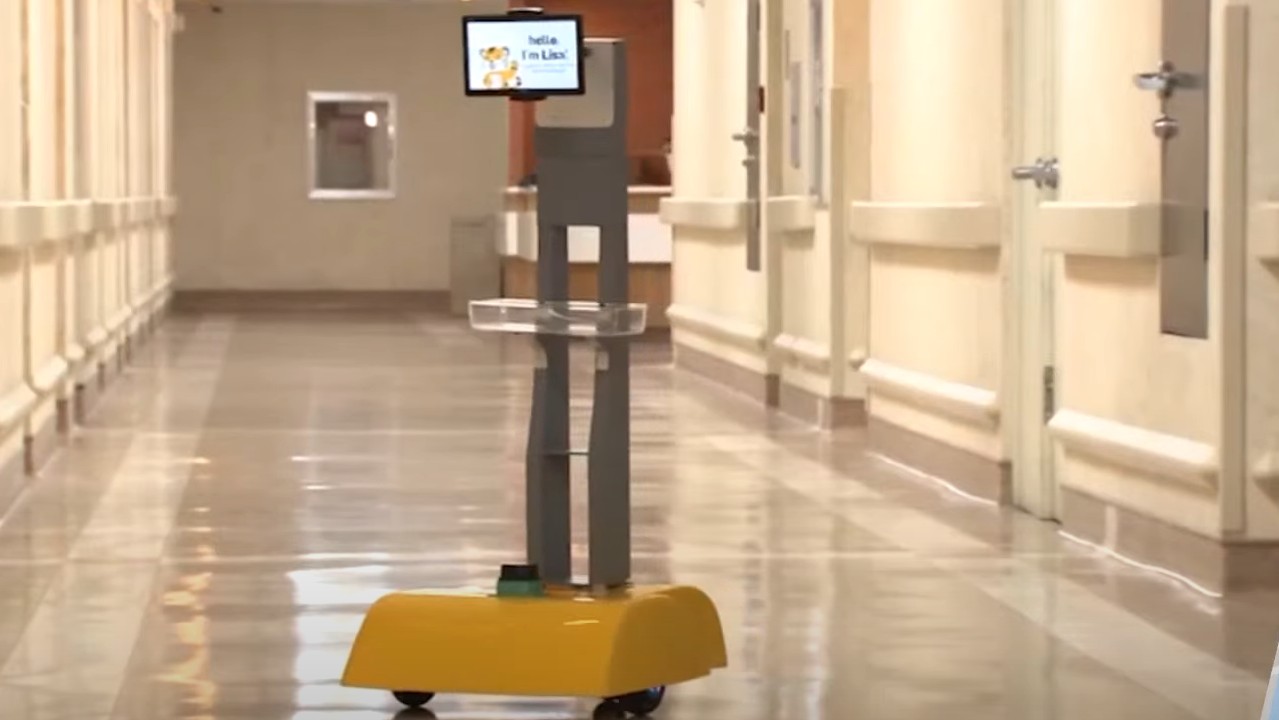UST engineers build robot to help in hospital tasks

A team from the University of Santo Tomas Faculty of Engineering has developed a robot that can help healthcare workers in various tasks in the hospital amid a shortage in personnel.
According to the latest feature in 24 Oras’ Game Changer on Monday, the Logistics Indoor Service Assistant robot or “LISA” can deliver documents or medical supplies, disinfect the hospital, and enable remote consultation through its installed tablet.
“Na-develop namin yung LISA Robot during the peak of pandemic, 2020. Kaya kami nakapag-develop nito so that the doctors can have communication with the patients,” said Anthony James Bautista, project leader and innovator.
(We developed the LISA robot during the peak of the pandemic in 2020. We developed this so that the doctors can have communication with the patients.)
“Ngayon nag-evolve yung project, depende na sa pangangailangan ng mga hospitals, he added.
(Now that the project has evolved, it can be customized depending on the needs of hospitals.)
As of April 6, 2024, data from the Department of Health showed that the estimated shortage of healthcare workers in the country is at 190,000.
With funding from the Department of Science and Technology-Philippine Council for Health and Research Development, the robot’s capability was enhanced to address the shortfall.
LISA’s main feature is it has sensors that can map out the whole healthcare facility. Once saved in its memory, it navigates autonomously around the hospital to carry out different tasks.
“Itong bagong version ng LISA robot, gumagamit kami ng simultaneous localization and mapping, wherein gumagamit kami ng lidar sensors para ma-map ng robot yung facility at ise-save niya sa memory niya ‘yun. With that concept, makakapag-navigate autonomously yung robot,” said Bautista.
(The latest version of the LISA robot uses simultaneous localization and mapping wherein it maps out the facility through lidar sensors. With that concept, the robot can navigate autonomously.)
Via a mobile app, users can see the various locations or points that LISA can go.
LISA also has proximity sensors which can detect objects that can obstruct to its path.
The LISA robot is already commercially available and it can be customized depending on the needs of the hospital.
“Ayun yung mga basic na pwedeng gawin ng robot that could help ease the burden or mga common tasks ng mga healthcare workers,” said Bautista.
(The robot can perform basic tasks that could help ease the burden or the common tasks of the healthcare workers.) —Vince Angelo Ferreras/RF, GMA Integrated News

Need a wellness break? Sign up for The Boost!
Stay up-to-date with the latest health and wellness reads.
Please enter a valid email address
Your email is safe with us






